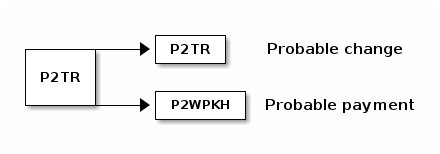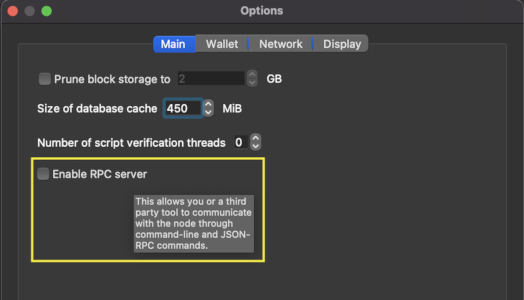/ home / newsletters /
Bitcoin Optech Newsletter #169
This week’s newsletter summarizes a proposal to add transaction heritage identifiers to Bitcoin and includes our regular sections with information about preparing for taproot, a list of new releases and release candidates, and summaries of notable changes to popular Bitcoin infrastructure software.
News
-
● Proposal for transaction heritage identifiers: a post by pseudonymous developer John Law was submitted to the Bitcoin-Dev and Lightning-Dev mailing lists. Law proposed a soft fork to add Inherited Identifiers (IIDs) which would allow referencing the txid of a transaction’s ancestor and the position of the outputs leading to the current input. For example,
0123...cdef:0:1indicates the current transaction input is spending the second child of the first output of txid0123...cdef. This allows participants in a multiparty protocol to create signatures spending a particular output even in cases when they can’t know in advance the txid of the transaction that will create that output.This compares to the floating transactions approach enabled by the proposed SIGHASH_ANYPREVOUT soft fork and described as part of the eltoo protocol. Floating transactions allow participants to create signatures for a particular output without knowing its txid as long as they otherwise satisfy the conditions in that output’s script.
Law describes four different protocols enabled by IIDs in an extended paper, including alternatives to eltoo and channel factories, plus ideas that could simplify watchtower design. Anthony Towns suggested that the features of IIDs could be simulated using anyprevout, which would still represent a novel development, although Law disagreed about the possibility of simulation.
Discussion of the ideas was complicated due to not all participants being willing to use the mailing lists. If discussion on the lists resumes, we’ll summarize any notable updates in a future newsletter.
Preparing for taproot #16: output linking
A weekly series about how developers and service providers can prepare for the upcoming activation of taproot at block height 709,632.
After taproot activates, users will begin receiving payments to P2TR outputs. Later, they’ll spend those outputs. In some cases, they’ll make payments to non-P2TR outputs but will still return their change to themselves using a P2TR change output.

It’s easy for an expert or an algorithm observing such a transaction to reasonably infer that the P2TR output is the user’s own change output, making the other output the payment output. This isn’t guaranteed to be true, but it is the most likely explanation.
Some have argued that the many privacy benefits of taproot should be ignored because of this possible temporary decrease in privacy during the transition of wallets to P2TR. Many experts have called that an unwarranted overreaction. We agree and can also offer a few additional counterpoints to consider:
-
● Other metadata: transactions may contain other metadata that reveals which outputs are change and which are payments. One of the most concerning is the large percentage of outputs that currently reuse addresses, significantly reducing privacy for both the spenders and receivers involved in those transactions. For as long as those problems persist, it seems foolish not to proceed with significant privacy upgrades for users of wallets and services that implement best practices.
-
● Output script matching: Bitcoin Core’s built in wallet defaults to using a segwit change output if any of the payment output types are also segwit. Otherwise, it uses the default change address type. For example, when paying a P2PKH output, a P2PKH change output might be used; for a P2WPKH output, P2WPKH change is used. As described in Newsletter #155, after taproot activation Bitcoin Core will begin to opportunistically use P2TR change outputs when any other output in the same transaction is P2TR. This can minimize any increase in change identifiability during the transitional period.
-
● Request upgrades: with P2TR, we have an opportunity for the first time in Bitcoin’s history to get everyone using the same type of output script no matter their security requirements, and also to frequently use indistinguishable inputs, which significantly improves privacy. If you want to see a meaningful increase in Bitcoin privacy, you can ask the users and services you pay to provide taproot support (and also to stop reusing addresses, if applicable). If both you and they upgrade, then change outputs become harder to identify and we also get all of taproot’s other amazing privacy benefits.
Releases and release candidates
New releases and release candidates for popular Bitcoin infrastructure projects. Please consider upgrading to new releases or helping to test release candidates.
- ● LND 0.13.3-beta is a security release fixing CVE-2021-41593, a vulnerability which can lead to loss of funds. The release notes also contain suggested mitigations for nodes that can’t be immediately upgraded.
Notable code and documentation changes
Notable changes this week in Bitcoin Core, C-Lightning, Eclair, LND, Rust-Lightning, libsecp256k1, Hardware Wallet Interface (HWI), Rust Bitcoin, BTCPay Server, BDK, Bitcoin Improvement Proposals (BIPs), and Lightning BOLTs.
-
● Bitcoin Core GUI #416 adds an “Enable RPC server” checkbox which allows the user to turn on and off Bitcoin Core’s RPC server (requires restart).

-
● Bitcoin Core #20591 changes the wallet time calculation logic to only use the block timestamp when rescanning historical blocks for transactions relevant to the wallet. Users and applications using the
rescanblockchainRPC to manually invoke rescans should no longer see transactions inaccurately labeled with the time scanned instead of time confirmed, eliminating an occasional source of confusion and frustration. -
● Bitcoin Core #22722 updates the
estimatesmartfeeRPC so that it only returns feerates higher than both the configured and dynamic minimum transaction relay fees. For example, if the estimator calculates a fee of 1 sat/vbyte, the configured value is 2 sat/vbyte, and the dynamic minimum has risen to 3 sat/vbyte, then a value of 3 sat/vbyte will be returned. -
● Bitcoin Core #17526 adds the Single Random Draw (SRD) algorithm as a third coin selection strategy. The wallet will now acquire coin selection results from each of the Branch and Bound (BnB), the knapsack, and the SRD algorithms and use the waste heuristic we described previously to select the most cost effective coin selection result out of the three to fund the transaction.
In simulations based on about 8,000 payments, the PR author found that the addition of the SRD algorithm reduced overall transaction fees by 6% and increased the occurrence of changeless transactions from 5.4% to 9.0%. Not creating a change output decreases the weight and fees of a transaction, reduces the wallet’s UTXO pool size, saves the cost of later spending the change output, and is thought to improve the privacy of the wallet.
-
● Bitcoin Core #23061 fixes the
-persistmempoolconfiguration option, which previously did not persist the mempool to disk on shutdown when no parameter was passed (to actually persist, you had to pass-persistmempool=1). Now using the bare option will persist the mempool (which remains the default, so it shouldn’t need to be passed). -
● Bitcoin Core #23065 makes it possible for wallet UTXO locks to be persisted to disk. The Bitcoin Core wallet allows users to lock one or more of their UTXOs to prevent it from being used in automatically-created transactions. The
lockunspentRPC now includes apersistentparameter that saves the preference to disk, and the GUI automatically persists user-selected locks to disk. One use for persistent locks is preventing spending of low-value spam outputs, or the spending of other outputs that may reduce a user’s privacy. -
● C-Lightning #4806 adds a default delay of 10 minutes between the time the user changes their node’s fee settings and when the new settings are enforced. This allows the node’s announcement of the new fees to propagate across the network before any payments are rejected for failing to pay a recently-raised fee.
-
● Eclair #1900 and Rust-Lightning #1065 implement BOLTs #894, which makes the LN protocol more strict by only allowing the use of segwit outputs in commitment transactions. By implementing this restriction, LN programs can use a lower dust limit which (when feerates are low) reduces the amount of money that may be lost to miners during a channel force close.
-
● LND #5699 adds a
deletepaymentscommand that can be used to delete payment attempts. By default, only failed payment attempts can be deleted; for safety, an additional flag must be passed to delete successful payment attempts. -
● LND #5366 adds initial support for using PostgreSQL as a database backend. Compared to the existing bbolt backend, PostgreSQL can replicate across multiple servers, perform database compaction on-the-fly, handle larger datasets, and provide a more granular locking model which may improve I/O lock contention.
-
● Rust Bitcoin #563 adds support for bech32m addresses for P2TR outputs.
-
● Rust Bitcoin #644 adds support for tapscript’s new
OP_CHECKMULTISIGADDandOP_SUCCESSxopcodes. -
● BDK #376 adds support for using sqlite as the database backend.
